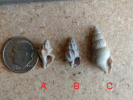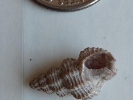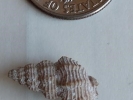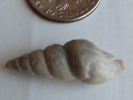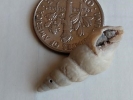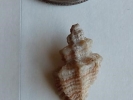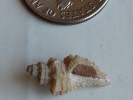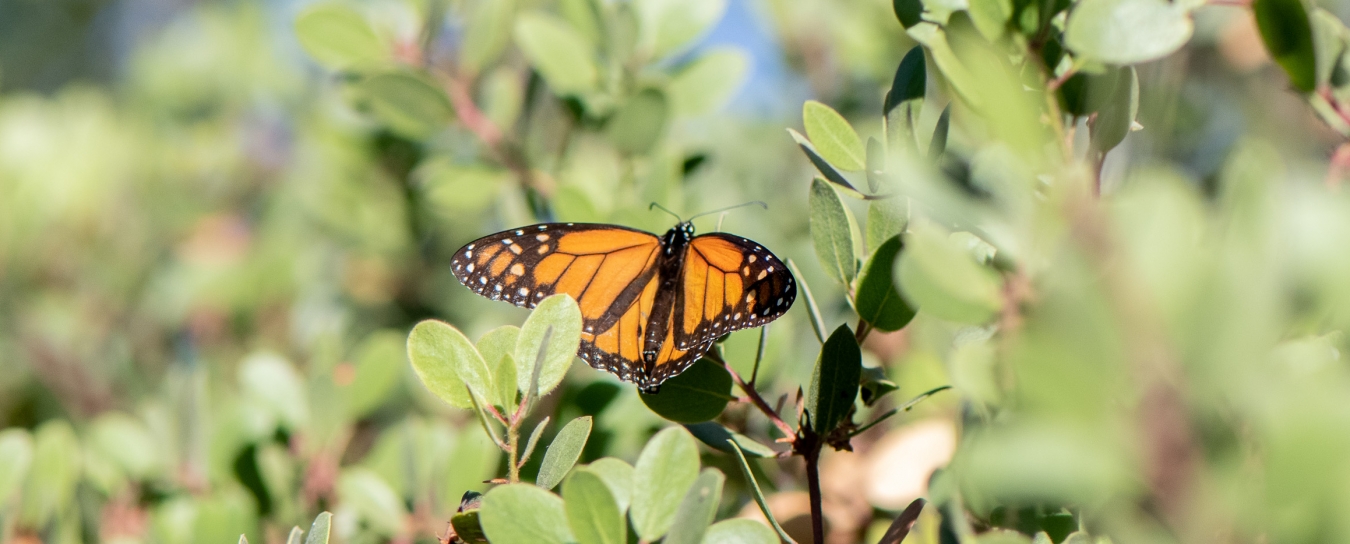
Invertebrates
See our handy guide to critters found in local homes and our Central Coast Butterfly FAQ. Browse the insects and other terrestrial arthropods we’ve identified. Check out local marine invertebrates, particularly bivalve mollusks and intertidal organisms.
- Anthropology
- Rocks & Fossils
- Invertebrates
- Vertebrates
- Botany
- Astronomy
- Fungi
- General
- Recently Asked
Shells from Platform Heritage
Hello,
I need a little direction as where to go to get some fossil shells identified and dated. The shells are from Platform Heritage (offshore from Gaviota) and 3-4 thousand feet deep in the formation, so they have to be millions of years old. Can you point me in the right direction please? I am curious as to what formations they came from, what their names are, and age.
Thank you,
Robert

Curator Response
Hi Robert,
Thank you for sending us these photos of shells pulled up from Platform Heritage, especially the additional photos you emailed us with close-up views from different angles.
My colleague Curator of Malacology Daniel L. Geiger, Ph.D., was able to identify your shells. They are:
A) Ocenebra, a genus of predatory marine snails
B) Nassarius cerritensis, a species of scavenging marine snail
C) Antiplanes thalaea, a species of predatory marine snails. Fun fact: typically, the shells of snails in the genus Antiplanes are left-handed (referring to the direction in which they coil), but some species, including this one, are right-handed.
Platform Heritage was drawing up from Pescado Oil Field in the Santa Ynez Unit. The underlying geology has been well-studied and is described in this research from the late 1990s published by the American Association of Petroleum Geologists. The article is behind a paywall, but I was able to read it to better answer your question.
Under Platform Heritage, the first 150 feet are quaternary sediments from about 2.5 milllion years ago to the present. The next 5,000 feet is in the Pico Formation (made up of conglomerates, sandstone, and some silts/shale). The Pico is a Pliocene Epoch (5.33 to 2.58 million years ago) marine unit.
As a geologist and paleontologist whose main area of expertise is mammals, I got to work with some whale material in part of the Pico Formation down in Ventura County. Although I was focused on the whale fossils, I noticed that most of the shells encountered in the formation were relatively colorless, as is common with deeply-buried shells in just about any formation. Great depth = great pressure, and the minerals in shells tend to recrystallize and end up looking pretty different as a result. The shells you have from Platform Heritage are relatively bright, and they also look very clean—the sediment remaining inside some of them looks relatively loose, not lithified or made into stone like the Pico, and their outsides are clean and free of surrounding rock. This suggests they were picked up from higher up in the well/deposited more recently in time.
When I looked for these kinds of snails in the databases mapping local paleontology literature, I found listings for two of the three kinds. They have been found locally as far back as Pleistocene Epoch (2.5 million years to 11,700 years ago) formations. Along with their great condition, that suggests that they are thousands rather than millions of years old. This is consistent with the difficulties of sampling from an oil well: I’ve known of samples from land-based oil drilling that intentionally go deep, but inadvertently pick up items from higher in the well, too.
Although these shells may not be as deep or old as you expected, they’re still very cool; it’s not every day we are asked about shells that were pulled up from an offshore drill. I hope that it was still interesting to you to have them identified and hear more about the rocks Platform Heritage tapped into. If you’re interested to learn more about geology inland as well, you might enjoy looking at the selection of geologic maps the Museum has published from the epic cartographic achievements of Tom Dibblee, Jr., who personally mapped the geology of about a quarter of California.
Stay curious,
Dibblee Curator of Earth Science Jonathan Hoffman, Ph.D.
